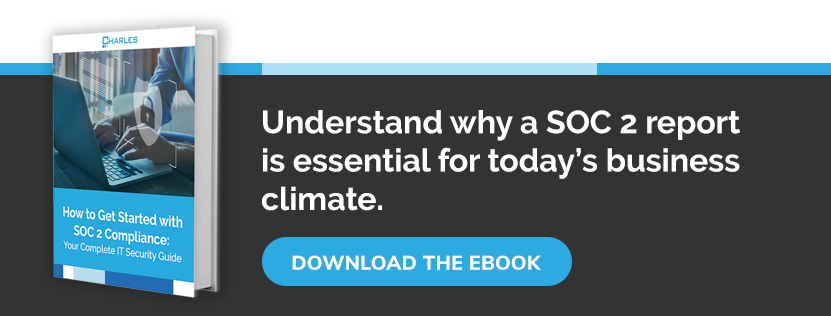While today’s business leaders generally understand how important it is to implement multiple layers of security over their customer data, they can’t protect what they don’t know about. This is why it’s essential to have a complete and current view of their entire IT infrastructure. That’s the first step towards achieving compliance with any information security regulation, and SOC 2 is no exception.
How To Get SOC 2 Compliance
Trust must be earned, which is the core principle SOC 2 compliance follows by identifying five trust services criteria: security, availability, processing integrity, confidentiality, and privacy.
To achieve SOC 2 compliance, it’s necessary to engage with an external auditor, who is also a certified public accountant (CPA), since that’s the body that introduced the standard. You’ll also need to select the trust services criteria you want to focus on. While only the overarching security criteria (also known as the common criteria) is mandatory, your clients may demand that your audits cover all five areas.
Before engaging with an auditor, it’s important to do everything you can to identify and patch any potential vulnerabilities. This is where a network vulnerability assessment comes in to give you a chance to resolve issues and increase your chances of a successful audit.
What Is Security Information and Event Management Logging?
Security information and event management (SIEM) is a type of logging activity that gives you insight into the various activities within your computing environment. SIEM aggregates the log data generated throughout your computing infrastructure to provide comprehensive reporting on security-related incidents and events. It collects important information like failed logins and potential malware activity, among others, while sending alerts if the analysis detects anything that might become a problem.
While early SIEM solutions were little more than log management tools, today’s solutions are far more sophisticated. They often use advanced machine learning algorithms to identify risky activities in real time. This is especially important given the increasing number of new threats, many of which are hard to detect using conventional measures alone. Also, most SIEM tools are hosted in the cloud, providing flexible deployment options and easy access in distributed computing environments.
What Is A Network Vulnerability Assessment, And Why Do I Need One?
Before you engage with SOC 2 auditors, you should first conduct a mock assessment. After all, the last thing you want to do is have a compliance audit carried out before you’re confident there’s a decent chance of passing. A network security threat assessment identifies potential issues across your infrastructure, such as outdated operating systems, a lack of sufficient user access controls, dormant user accounts, and outdated security protocols. To that end, it helps establish a baseline for what can be defined as normal behavior and network activity.
A network vulnerability assessment will provide the insights you need to prepare for an actual SOC 2 audit. It will identify potential vulnerabilities and evaluate them comprehensively, giving you a chance to prioritize your remediation strategy. For an even more effective approach to information security, you can combine the security assessment with penetration testing too.
Proactively Protect Your Network From New And Emerging Threats
Most, if not all of the endpoints connected to your network have the capability to log security-related events, such as user login attempts. However, while they might be able to observe the events and report them in log entries, they are not always able to analyze them for suspicious activities. SIEM tools aggregate and analyze data produced across your entire inventory of computing resources to establish a baseline of normal behavior. Combined with the power of artificial intelligence (AI) and machine learning, they are also effective in identifying new and unknown threats that conventional measures might miss.
Maintain Complete Audit Trails To Quickly Identify Root Causes
By maintaining a complete record of all network activities, SIEM can also validate your efforts to achieve the highest possible standards of security. As such, SIEM can greatly simplify the compliance reporting process. Without one, it’s much harder, if not impossible, to have robust, centralized logging capabilities. Moreover, a SIEM offers a convenient way to get to the root cause of potential security vulnerabilities and incidents, especially when compared to having to manually retrieve logs from dozens or even hundreds of different endpoints.
Minimize The Disruptive Impact Of Security Incidents
Security incidents can cost businesses enormously, even if they don’t result in data exfiltration. By giving you the opportunity to identify potential risks in less time, you can keep the disruptive impact down to a minimum, if not eliminate it entirely. This is especially important for keeping up with the demands of the trust services criteria of availability and processing integrity. These criteria ensure that systems used to protect client data are always available and that data, like that recorded in your logs, is always held to the highest standards of integrity.
Charles IT provides SIEM services that monitor your infrastructure around the clock to greatly reduce the chances of an attacker penetrating your network. Call us today to find out more.
Editors note: This blog was originally published on March 2, 2021 and was updated on December 27, 2022 for accuracy.




